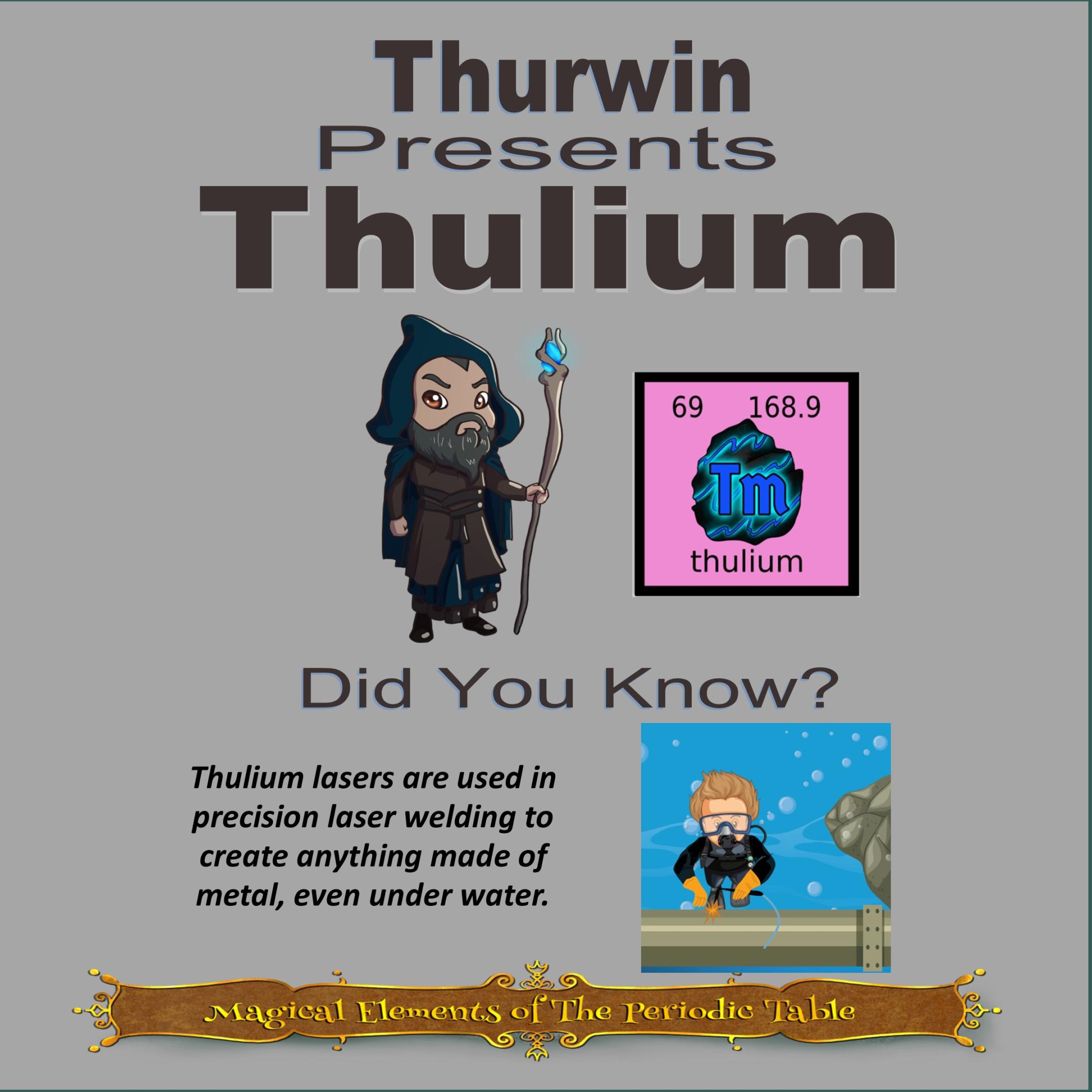
Discovering Thulium: The Tale of a Rare Element

In the vast world of chemistry, the periodic table is like a detailed map of elements, each representing a unique building block of matter. One of these fascinating elements is Thulium (Tm), known for its unusual properties and applications. But how did this rare element come to be discovered, and what makes it special? Let’s take a closer look!
Thulium was first discovered in the year 1879 by a Swedish chemist named Lars Fredrik Nilson. At the time, scientists were exploring the lanthanide series of elements, which are found in the f-block of the periodic table. This series consists of 15 elements that share similar properties, and Thulium is one of the less common lanthanides.
Nilson isolated Thulium from a mineral called gadolinite, which also contained other rare earth elements. Gadolinite was mined primarily in Sweden, and Nilson used several chemical processes to extract Thulium from this mixture. After some hard work, he succeeded in identifying and naming the new element, drawing the name from the mythical land of “Thule,” which represented the northernmost regions of the world in ancient texts.
Thulium stands out for several reasons. It is the 69th element on the periodic table, and it is known for being the least abundant of the lanthanide elements. With a silvery-gray color, Thulium is relatively stable in air, which means it doesn’t react with oxygen quite as quickly as some other metals. It has anatomic number 69 and melting point around 1,545 degrees Celsius (2,813 degrees Fahrenheit), making it one of the more durable elements.
One of its most exciting features is its ability to absorb and emit light. Thulium ions create a vibrant blue color when subjected to light, making it useful in various applications, including lasers. In fact, Thulium lasers are often used in medical procedures, such as breaking up kidney stones or other surgical applications. This showcases just how vital and versatile this rare element can be.
The applications of Thulium extend beyond just lasers. Due to its unique properties, it’s also used in:
1. Nuclear Reactors: Thulium can absorb neutrons, making it valuable in certain nuclear processes, helping maintain stability.
2. Electronics: Thulium oxides are often used in the production of specialized glass and ceramics, enhancing the performance of devices.
3. Alloys: When added to other metals, Thulium improves strength and can enhance the results of various metallurgical processes, making it useful in manufacturing and construction.
4. Medical Devices: Due to its properties, Thulium is often incorporated into medical imaging devices and in treatments where focused energy is needed.
Thulium may be one of the lesser-known elements on the periodic table, but its discovery and uses reveal the depth of innovation that comes from studying chemistry. The journey from a rare mineral to a valuable specific applications shows how curiosity and scientific investigation can lead to breakthroughs in technology and medicine. As you continue exploring the wonders of the periodic table, remember that even the rarest elements, like Thulium, play important roles in the story of our world!
This article is brought to you by Sybrina Durant, the author of the middle grade picture book, Magical Elements of the Periodic Table Presented Alphabetically By The Elemental Wizards. Learn More. In that book Thulium is presented by the Wizard, Thurwin.
Inter-Active Elemental Fantasy-Themed Periodic Table from Magical Elements of the Periodic Table Presented Alphabetically by The Elemental Dragon Clan
Click here to use This Inter-Active Viewer To Learn More About The Elements Each Elemental Represents On This Periodic Table. Want this in a 24″ x 36″ Poster? Click here.
Sybrina Publishing Offers Fun Activities Based On The Book
Magical Elements of the Periodic Table Magical Elementals
Browse Magical Elemental Activities at MagicalPTElements or Sybrina-Publishing on TPT or Classful
Want To Hear The No Metal No Magic Song?












